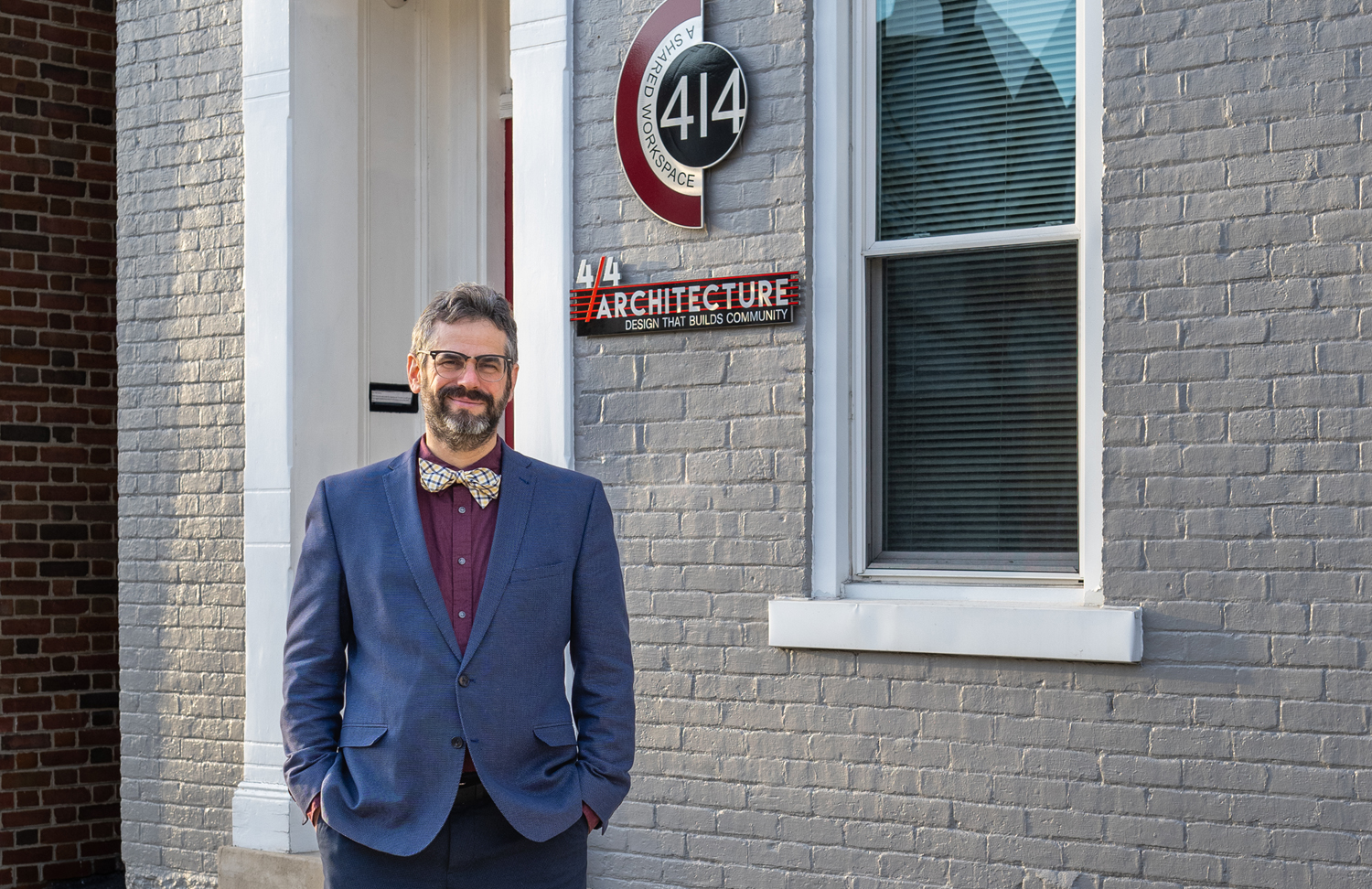‘What will it take to make this building usable?’
Unlock the front door of a home being considered for historic preservation and you open a view to layers of history. I’ve seen some doors chained shut with padlocks and others boarded up with hammer and nails. This Historic Farmhouse could still be opened with a key, though, a good sign. It stands on an attractive site, at the far end of a subdivision and adjacent to a stream. The backyard is even on a trail where I like to go for bike rides with my sons. But on that, my first visit to the Farmhouse, my purpose was to determine: What will it take to make this building usable?
As a first step, I examine and document existing conditions, including: Site conditions. Building envelope (exterior) and structure. Accessibility. Major systems like mechanical, electrical and plumbing. So I got started.
The exterior of the Farmhouse hides its promise behind boarded up windows. Inside, solid timbers supporting the floor and roof were visible. Some even had family names and dates written on them. The house dates all the way back to the early 1800s.
Layers of history on display
Renovations were done now and then over the years. The first and second floor reveal the hand of someone who had tried to redecorate in a contemporary 1940s fashion. These modifications were fashionable for only a short time, yet here were layers of history on display. Overall, the place conveys a feeling of opulence, now faded.
More significant for today’s purpose, though, would be what the building could offer new occupants. Unusual for an old homestead, the room size and ceiling height seemed generous.
The basement and attic revealed the “bones,” still strong. This is probably a result of the quality and size of the timber framing and because it has been kept dry through the past 200 years. That’s no small feat.
It was evident the roof can stay. Notably, even though it is slate, it is probably not original. Pine decking above the timbers suggests the Farmhouse originally had wood shingles.
The Farmhouse was built well before modern plumbing. Later owners must have decided that a bathroom would be more important than a formal front entrance because the space is now occupied by a powder room, a lamentable choice. Probably these same owners also put ductwork though the front entrance to heat the house.
Goals for the historic preservation
When you approach historic preservation, it’s important to identify the goals upfront. These could range from just making the space usable to fully restoring the building to its original historic period — though usually with modern systems.
In my role on the South Bethlehem Historic Review Board, I’ve seen most owners opt for the former. Rather than restoration, they want spaces that are comfortable and practical for today’s uses. Likewise, the Township of Whitehall’s charge for this Farmhouse is to determine the cost of making the building usable in order to make an informed decision on what to do with the property.
To keep everybody on the same page, we get specific about what this means. For starters in this case, usable means everything is in good repair, signs and causes of mildew and water damage are addressed, and specific systems are updated and working properly.
Moving the project forward
The good news is that the Farmhouse appears structurally sound. The Township is considering the report on existing conditions and will decide how to move forward.
From there on out, good communication helps the project flow smoothly. Almost any project involves agencies and engineers, departments and contractors who need to be part of the conversation. In addition to design work and construction drawings, the architect has a central project management role in bringing a historic preservation project to fruition.
There will still be many decisions to be made. An example in this case: Next to the house is what is believed to be a mid-1700s domicile that later became a summer kitchen. While it’s easy to look back and be fascinated, it’s at least as important to look forward toward new uses.
If you’d like to determine the potential of your historic building, contact me at gary@44architecture.com.

